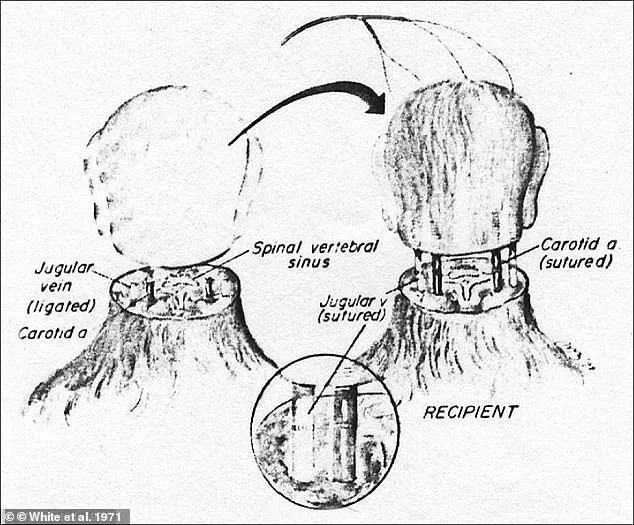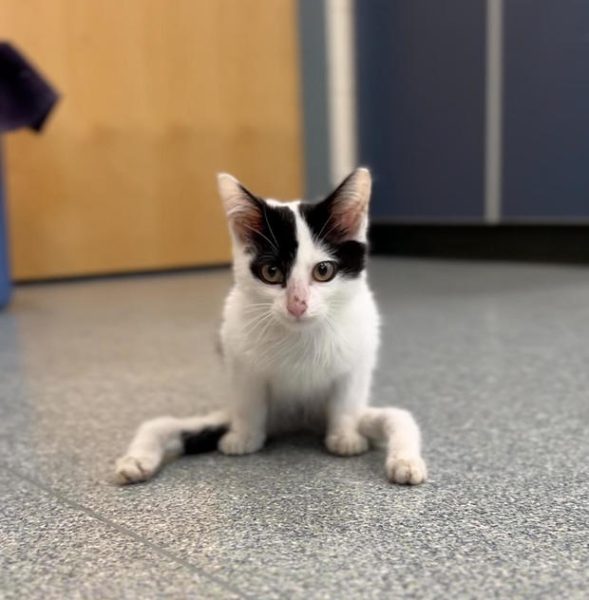Head Transplants and Why They Just Might be Possible
November 1, 2022
When people think of transplants, they tend to think of internal organs, kidneys, lungs, hearts etc. Limbs aren’t usually even a thought in the ordinary person’s mind, let alone the entire head, doctor Robert White, is anything but ordinary. Born and raised in Duluth Minnesota, White was raised by his mother and aunt, his father having been killed in active duty during WWII. His fascination of the human brain started when his high school biology teacher admired how perfectly he extracted a frog’s brain from it’s skull, telling him he should be a brain surgeon, White took this compliment to heart and made it the main focus of his future. He began his understudies at the University of St. Thomas before he entered the University of Minnesota Medical School in 1949, eventually, he decided to transfer to Harvard Medical school in 1951 where he earned his cum laude medical degree. White went on to have ten children with his wife Patricia Murray, a nurse whom he met while completing his surgical internship. A devout Roman Catholic, White was a member of the Pontifical Academy of Sciences, he attended mass regularly and prayed before surgeries.
During the span of his career, he performed over 10,000 surgeries and authored over 900 publications on neurology and medicine. White also became a medical ethics advisor to Pope John Paul II, established the Vatican’s Commission on Biomedical Ethics in 1981 and influenced the Church’s views on brain death and in vitro fertilization. He later went on to nickname himself “Humble Bob”, this was before he began his testing on Rhesus monkeys, which he had no issues with, because he believed that animals(including monkeys) had no soul, and thusly were inferior to humans. This caused PETA activists to dub him “Dr. Butcher”.
White was now on a mission to prove that head transplants aren’t simply science fiction. So once he got access to a batch of Rhesus monkeys, he began his testing. His initial tests began with two anesthetized monkeys on chairs, Monkey A and Monkey B, Monkey B was only there to be a blood bag for Monkey A. Monkey B’s arteries were connected to Monkey A’s brain, giving a constant supply of blood, White then began cutting away the flesh from Monkey A’s face. Gradually, it’s eyes, nose, lips and scalp were all removed, leaving a bare monkey skull on a body, before the removed the skull from the body, and then the skull. Monkey A’s brain was now sitting in the chair, and it was “alive”, meaning there were still electric signals throughout its brain, a tell-tale sign of life. The next, and arguably more impressive experiment involved two more monkeys, Monkey C and Monkey D. White removed the heads of both Monkey C and Monkey D, while keeping all of their arteries and brain stem intact, he’d then go on to connect the arteries and brain stem of Monkey C to those of Monkey D’s, killing Monkey D’s head before sewing Monkey C’s onto the neck of Monkey D. After 18 hours of surgery, all that was needed to do now was wait. Wait they did, and after hours of waiting, the monkey woke up, angry, but alive. It’s eyes followed the movement of a pen and it bit a pencil that was near its mouth, it couldn’t move, due to them severing Monkey D’s spinal cord in the surgery. The body eventually rejected the head and it died 9 days later, but the fact that it could be done, the fact that it was possible to transplant a head onto a body gave White hope, he planned to perform similar operations on humans, practicing on corpses at a mortuary. He hoped he could transplant the heads of Stephen Hawking and Christopher Reeve, he never got the chance, and died in 2010 at age 84, a true pioneer for the concept of head transplants.
In more recent years, other scientists have done similar tests with other animals, yet none have had a resounding, lasting success. In 2012 Xiaoping Ren grafted the head of a mouse to the body of another, the main focus was to ensure the prolonged survival of the mouse, with help of technologies and medications, the mouse lived for 6 months after the surgery. 3 years later, Ren cut off the heads of mice but left the brain stem in place, and then connected the vasculature of the donor head to the recipient body, attempting to see if the host body could survive without external life support, with some difficulty and lots of failures, it could, for at least a little while.
Now, obviously, there are many ethical and medicinal concerns that come with this concept, most of society finding it barbaric and impossible. In the early days of medicine, the concept of organ transplants seemed outlandish, barbaric and impossible, so why would a limb or head transplant be any different? I’ll leave you with one of Dr.White’s most famous quotes. “Our attitudes, opinions, beliefs and judgments are, simply put, our attitudes, opinions, beliefs and judgments. They are not universal truths.”
This article wasn’t made to sway you to support or go against the idea of head transplants, just to give a little insight into what might be a common medical practice years from now. That’s about all I had to say, have a wonderful day!









